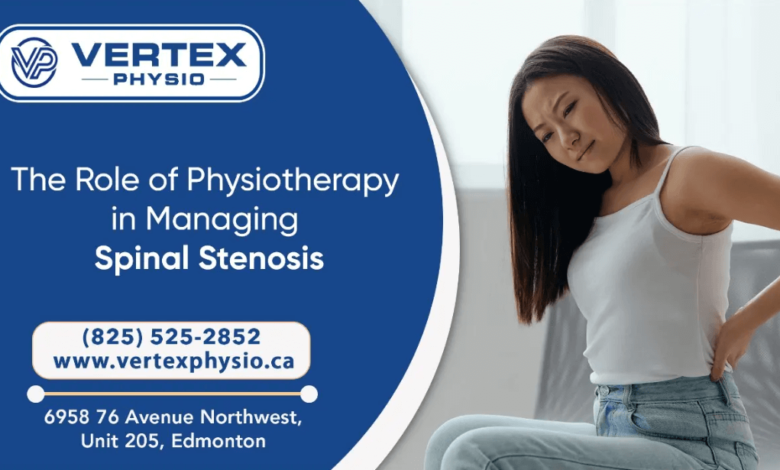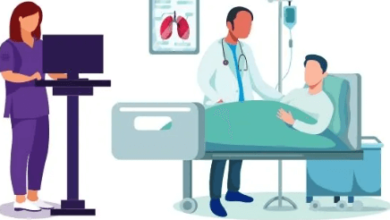The Role of Physiotherapy in Managing Spinal Stenosis

Managing spinal stenosis can be a challenging task, but physiotherapy plays a crucial role in alleviating symptoms and improving quality of life. The narrowing of the spinal canal of spinal stenosis can lead to significant back pain and discomfort. Through back pain physical therapy, individuals can alleviate the debilitating effects of this condition. For those seeking effective treatment, back pain physiotherapy Edmonton offers targeted strategies to reduce pain, enhance mobility, and strengthen the muscles supporting the spine. By incorporating these therapeutic techniques, patients with spinal stenosis can achieve better pain management and improved overall function.
Here are some key back pain physiotherapy techniques used to manage spinal stenosis:
Manual Therapy
Manual therapy involves hands-on techniques used by physiotherapists to mobilize joints and soft tissues. This can include spinal manipulation, joint mobilization, and soft tissue massage. These techniques help to minimize pain, improve range of motion, and alleviate muscle tension associated with spinal stenosis. Manual therapy is a cornerstone of back pain physiotherapy in Edmonton, providing immediate relief and long-term benefits.
Heat and Cold Therapy
Alternating heat and cold therapy will provide significant relief from pain and inflammation. Heat therapy helps relax tight muscles and increases blood flow, while cold therapy reduces swelling and numbs painful areas. These therapies are often used in conjunction with other physiotherapy techniques to enhance their effectiveness.
Stretching Exercises
These exercises are essential for improving flexibility and reducing stiffness in the back and hips. Specific stretches target the lumbar spine and surrounding muscles, helping to relieve pressure on the spinal canal. Examples include hamstring stretches, hip flexor stretches, and lower back stretches. Regular stretching can significantly improve mobility and reduce symptoms of spinal stenosis.
Exercise:
Hamstring Stretch – Lie on the back with one leg bent and the other leg straight. Slowly lift the straight leg towards the ceiling, keeping the knee slightly bent. Use a towel or strap around the foot to gently pull the leg closer to the body until a stretch is felt in the back of the thigh.
This stretch helps to minimize tension in the hamstrings, which can alleviate pressure on the lower back.
Strengthening Exercises
Strengthening exercises focus on building the core and back muscles to support the spine better. Core strengthening exercises such as planks, bridges, and abdominal crunches help stabilize the spine, improve posture, and reduce the risk of further injury. These exercises are integral to back pain physical therapy and are tailored to each patient’s needs and abilities.
Exercise:
Bridge Exercise – Lie on the back with knees bent and feet flat on the floor. Tighten the abdominal muscle group and lift the hips upwards, creating a straight line from shoulders to knees. Hold for a few seconds, then slowly lower the hips back to the starting position.
The bridge exercise strengthens the lower back and gluteal muscles, enhancing spinal support and stability, which can help minimize pain associated with spinal stenosis.
Aerobic Conditioning
Low-impact exercises like walking, swimming, and cycling are beneficial for overall cardiovascular health and spinal health. Aerobic conditioning helps improve endurance, promotes healthy blood flow to the spine, and reduces inflammation. Incorporating regular aerobic exercise into a physiotherapy program can enhance overall fitness and aid in managing spinal stenosis.
Exercise:
Walking – Engage in a brisk walk for 20-30 minutes, maintaining a comfortable pace that allows for steady breathing. Focus on keeping good posture, with the head up, shoulders back, and core engaged.
This can help reduce inflammation and improve spinal health, alleviating symptoms of spinal stenosis.
Postural Training
Maintaining proper posture is crucial for minimizing the symptoms of spinal stenosis. Postural training involves educating patients on the correct ways to sit, stand, and move to reduce strain on the spine. Physiotherapists provide exercises and techniques to improve posture, which helps alleviate pain and prevents further spinal degeneration.
Exercise:
Wall Angels – With the back against a wall, stand feet shoulder-width apart and heels about six inches away from the wall. Press the lower back, upper back, and head against the wall. Raise the arms to shoulder height, bending the elbows to form a 90-degree angle. Slowly slide the arms up and down the wall, holding on to the wall throughout the movement.
This exercise reduces strain on the spine and alleviates symptoms of spinal stenosis by encouraging correct posture habits.
Functional Training
This training focuses on improving the ability to perform daily activities without pain. This includes exercises that mimic everyday movements, such as lifting, bending, and reaching. Functional training helps patients regain independence and improve their quality of life by making daily tasks easier and less painful.
Exercise:
Squat to Chair – Position oneself in front of a chair with feet shoulder-width apart. Lower the body into a squat by bending the knees and hips while holding a straight back. Lightly touch the chair with the hips before standing back up. Repeat this movement, ensuring that the knees do not extend past the toes.
This exercise enhances the ability to perform such tasks with reduced pain and improved stability, aiding in functional recovery from spinal stenosis.
Back pain physiotherapy in Edmonton utilizes these techniques to manage spinal stenosis effectively.
Read also: How Health Share Can Provide Peace of Mind
Take Control of Spinal Stenosis with Physiotherapy
Physiotherapy plays an essential role in managing the symptoms of spinal stenosis, offering patients a path to reduced pain and improved mobility. If spinal stenosis is impacting your quality of life, consider exploring the benefits of back pain physiotherapy at Vertex Physiotherapy.
Our team is dedicated to providing care tailored to your unique situation. Don’t let spinal stenosis hold you back—schedule a consultation with Vertex Physiotherapy today and take the first step towards a pain-free life. Contact us to learn more about how our back pain physiotherapy in Edmonton can help you manage spinal stenosis effectively.




